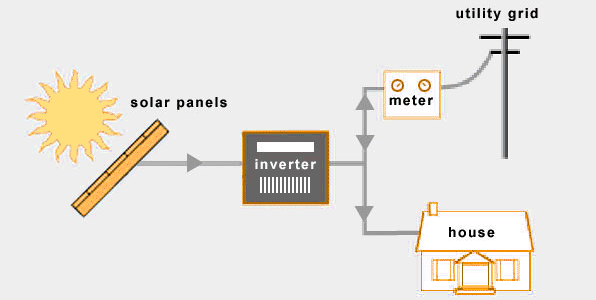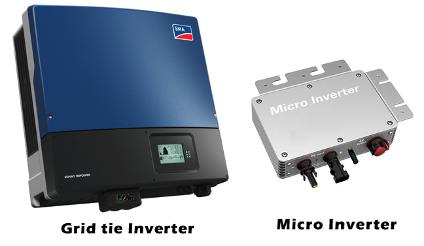ON Grid (Grid Tie) Solar Systems
ON grid, utility-interactive, gridInter tie and grid back feeding are all terms used to describe the same concept solar system that is connected to the utility power grid.

Advantages of On Grid Systems
1. Save More money with Net Metering
A grid-connection will allow you to save more money with solar panels through better efficiency rates, net metering, plus lower equipment & installation costs:
Batteries & other stand-alone equipment, are required for a fully functional off-grid solar system and add to costs as well as maintenance. Grid tied solar systems are therefore generally cheaper & simpler to install.sUrrolar panels will often generate more electricity than what you are capable of consuming. With net-metering, homeowners can put this excess electricity onto the utility grid instead of storing it themselves with batteries.
Net metering (or feed-in tariff schemes in some countries) play an important role in how solar power is incentivized. Without it, residential solar systems would be much less feasible from a financial point of view.
Many utility companies are committed to buying electricity from homeowners at the same rate as they sell it themselves.
Equipment of On Grid Systems
Standard On Grid solar systems rely on the following components
- Grid Tie Inverter or Micro Inverter
- Power Meter
On Grid Inverter
They regulate the voltage and current received from your solar panels. Direct current from solar panels is converted into alternating current (AC) which is the type of current that is utilized by the majority of electrical appliances.In addition to this, on grid inverters, also known as grid-interactive or synchronous inverters, synchronize the phase and frequency of the current to fit the utility grid (nominally 50-60Hz). The output voltage is also adjusted slightly higher than the grid voltage in order for excess electricity to flow outwards to the grid.
Micro Inverters
Micro Inverters go on the back of each solar panel, as opposed to one central inverter that typically takes on the entire solar array.
